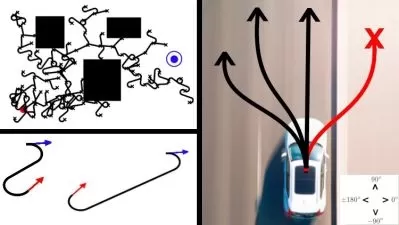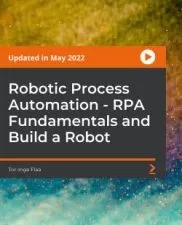Robotic Process Automation Project Management: Certification
Robert Chapman
10:55:05
Description
Learn how to confidently manage automation projects end to end, delivering the 6 stages of an RPA project successfully
What You'll Learn?
- How to manage an RPA project end to end
- The key stages in an RPA project and how to deliver them
- How to work with teams, developers and key stakeholders across a project
- The project management tools and templates, applied in an RPA setting
- How to define, design and deliver an RPA solution successfully and in full
- How to gather requirements for an automated solution
- How to map out the current and future state processes seen and needed
- How to build an effective PDD (Process Definition Document)
- The activities to be conducted before, during and after an automation project has completed
- How to manage the Developers, the testing of solutions and running of design workshops
Who is this for?
What You Need to Know?
More details
DescriptionWhen it comes to learning RPA and automation skills, the focus in courses is often placed heavily on the technical side - how to design and how to build. Alongside those vital skills, this course has been created to show how to manage that development, and the wider RPA project itself. Delivering RPA into a process is not a job done overnight, and can indeed take weeks and months to do. With that, come full end to end projects that need to be delivered.
In this course, you will learn how to confidently and successfully deploy those RPA projects, in full, in your organization from the second you complete the course. We will go through practical demonstrations, exercises and scenarios. We will explore the tools and templates you should use, the techniques to deploy and the methodologies to follow. We will show you how to manage the people, the process, the project. You will understand the types of challenges that will be faced and how to deal with them.
In the course, we will cover off:
- How to choose the process to automate.
- How to gather the requirements for your automated solution.
- How to map out the current and future state processes.
- How to build out the vitally important Process Definition Document (PDD).
- How to manage your Developers and work with them constructively.
- How to define, design and deploy your automated solution, including testing.
- How to close out your project successfully, including post go LIVE work.
By the end of this course, you will have the knowledge and the confidence to deliver end to end RPA projects in full, in a range of setting and scenarios, and for an array of purposes. This skill is one often learnt and not taught, so by taking this course, you will be advancing way ahead of others just like you in the wider market.
Who this course is for:
- Anyone working with a business process, producing some form of output
- Anyone working operationally within a business, working with multiple teams, activities or outputs
- Anyone who wants to be able to gain RPA automation skills in the field of process automation
- Those looking to play a greater role in critical business projects today, and longer term
When it comes to learning RPA and automation skills, the focus in courses is often placed heavily on the technical side - how to design and how to build. Alongside those vital skills, this course has been created to show how to manage that development, and the wider RPA project itself. Delivering RPA into a process is not a job done overnight, and can indeed take weeks and months to do. With that, come full end to end projects that need to be delivered.
In this course, you will learn how to confidently and successfully deploy those RPA projects, in full, in your organization from the second you complete the course. We will go through practical demonstrations, exercises and scenarios. We will explore the tools and templates you should use, the techniques to deploy and the methodologies to follow. We will show you how to manage the people, the process, the project. You will understand the types of challenges that will be faced and how to deal with them.
In the course, we will cover off:
- How to choose the process to automate.
- How to gather the requirements for your automated solution.
- How to map out the current and future state processes.
- How to build out the vitally important Process Definition Document (PDD).
- How to manage your Developers and work with them constructively.
- How to define, design and deploy your automated solution, including testing.
- How to close out your project successfully, including post go LIVE work.
By the end of this course, you will have the knowledge and the confidence to deliver end to end RPA projects in full, in a range of setting and scenarios, and for an array of purposes. This skill is one often learnt and not taught, so by taking this course, you will be advancing way ahead of others just like you in the wider market.
Who this course is for:
- Anyone working with a business process, producing some form of output
- Anyone working operationally within a business, working with multiple teams, activities or outputs
- Anyone who wants to be able to gain RPA automation skills in the field of process automation
- Those looking to play a greater role in critical business projects today, and longer term
User Reviews
Rating
Robert Chapman
Instructor's Courses
Udemy
View courses Udemy- language english
- Training sessions 134
- duration 10:55:05
- Release Date 2025/02/27










